For a smartphone, the iPhone 4 has a pretty decent camera, with a backside-illuminated 5MP sensor and a fast fixed-aperture f/2.8 lens. Compared to it’s contemporaries, it’s held up pretty well. The image quality is good enough that I typically don’t bother lugging my point and shoot around for most casual events and only step up to my SLR for more photo-intensive days. One issue, however, is that the iPhone 4 has a fixed 30mm-equivalent lens. This is a decent, all-round focal length, especially as the close-focusing capabilities are quite good (~3 inches). But sometimes, especially indoors and in video mode where the iPhone camera crops the image, one wishes for a wider lens.
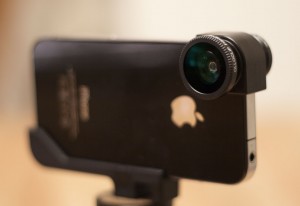
The olloclip
Well, the olloclip, developed by Patrick O’Neill and Chong Pak, is a pretty good solution. The olloclip is a 3-in-1 clip-on lens adapter for the iPhone 4, with wide-angle, fish-eye, and macro lenses. Currently they are selling for $69.95 direct from olloclip. I received one of the first batch of units recently due to my support of the Kickstarter project which raised funds for the production tooling and the first manufacturing run. The unit body is made of a pretty sturdy plastic, while the lens barrels are aluminum. The larger end is the fisheye and the other end is the wide-angle. The macro is located underneath the wide-angle and is accessed by unscrewing the wide-angle lens. The fisheye has a specified field of view of 151 degrees and the wide-angle is about 91 degrees. The macro is 10X. For reference, the stock iPhone 4 lens is about 60 degrees field of view. The fisheye image is not full-frame – the corners are unused. In video mode, the iPhone crops the image, making the effective field of views 77 degrees for the fisheye, 53 degrees for the wide angle, and 36 degrees for the standard lens. The fisheye is full-frame in video mode due to the crop.
It is 1.35 inches in length and 0.99 inches wide. Pretty small – I’ve been tucking it in the included microfiber bag and stuffing it in my soft-sided sunglasses case. Not so small that people won’t notice it – on the very first session I was wandering around with the olloclip, I was stopped by curious passers-by.
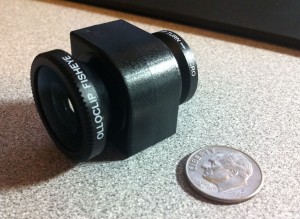
The Basics
Usage is pretty straightforward – just slide it over the camera. If you need the other lens, just pull it off, flip it over, and slide it back on. As mentioned earlier, the macro is accessed by unscrewing the wide-angle lens – this is easiest done when the olloclip is on your phone. The olloclip itself is held on by friction – I haven’t seen any scratching on either side of the phone’s glass yet and the olloclip guys say it won’t hurt the Gorilla Glass. Now the olloclip was designed to operate on bare iPhones, so if you have a case, you’ll have to remove it beforehand. It’s been tested to work with a number of screen protectors, but if the thickness is too great, even those can be a problem. The suggested workaround is to cut off the corner of the protector where the olloclip mounts. Also, the main body of the olloclip does cover the LED flash on the iPhone, so it’s not possible to use both simultaneously. A great future enhancement would be to design a transparent housing which would convert the LED flash into a ring flash for the macro. And though the olloclip is relatively small, you’ll still have to remove it before putting your phone in your pocket.
No special app required – just fire up any camera app and you’re in business.
Sample Images
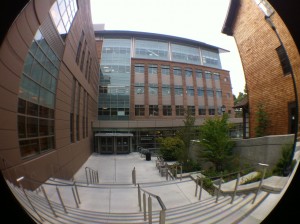
The fisheye is pretty blurry away from the center and as mentioned earlier, not full-frame, except in video mode.

The wide-angle lens shows quite a bit of barrel distortion in photo mode – in video mode it’s much less noticable due to the crop. Soft in the corners.

Standard iPhone 4 image
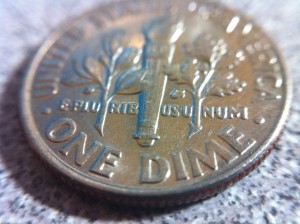
Macro – extremely shallow depth of field – about 0.25 inch. You have to hold it very close to the subject, about 0.5-0.75 inch. This translates to about a 0.5-0.8 inch image diagonal.
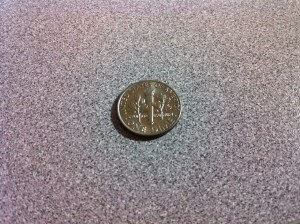
Standard iPhone image
Lens Calibration
In my day job, I occasionally calibrate cameras to determine the intrinsic camera parameters – effective focal length, camera center, and distortion are the big ones. I ran a quick-and-dirty calibration on the wide-angle and fisheye lenses and got estimated errors of about 2-3 pixels, which is decent for the conditions. It’s probably not worth running more rigorous calibration since the lens is not fixed and the camera center is probably going to wander from test to test. Interestingly, for the fisheye I get an estimated diagonal field of view of about 141 degrees, about 10 degrees less than the designers mentioned on Kickstarter. The caveat here is that my calibration may not be sufficiently accurate – when undistorting my calibration images, I’m still seeing some distortion near the edges. I estimate the horizontal field-of-view at 126 degrees and the vertical field-of-view at 88 degrees. For the wide angle, the entire image is used, and I estimate 80 degrees diagonal, 68 degrees horizontal, and 54 degrees vertical.
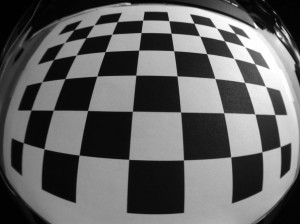
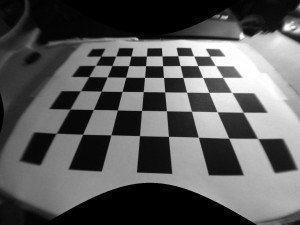
Fisheye calibration
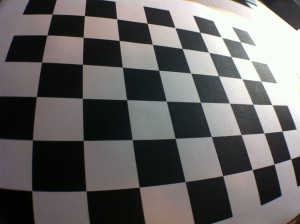
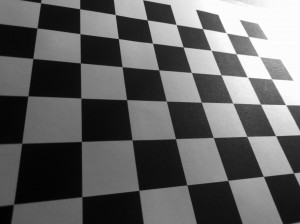
Wide angle calibration
Conclusions
The olloclip is a great gadget which really improves the flexibility of the iPhone 4 camera while being small enough that carrying it around isn’t too much of a problem. While the fisheye and wide-angle do suffer from significant barrel distortion as well as edge softness, this is balanced by the low cost of the system. Videographers will especially love the wider lens options, especially as the system does not suffer as much from distortion, vignetting and corner softness in video mode compared to photo mode. Realtors and landlords will appreciate the ability to quickly take wide-angle photos of interior rooms and architecture buffs will be able to pull this out to capture that skyscraper or cathedral. The macro is really nifty for those high-magnification shots, but is limited by the small range of focus distances and extremely shallow depth of field. Still, coupled with a small tripod and an adapter like the Glif, this makes for a pretty decent rig for shooting coins and other small objects. We urge the developers of the olloclip to consider making the plastics surrounding the macro lens translucent to allow the built-in LED flash to work as a ring flash. Of course, there is the criticism that this is an iPhone 4-only accessory; it is rumored that the next iPhone will retain the same form factor, but even if this was only useful for the next year, the olloclip would probably make for a nice bundle addition when you finally sell or hand down the phone.
More Images
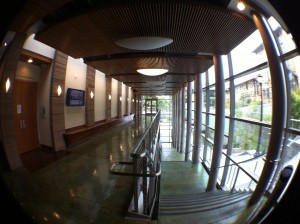
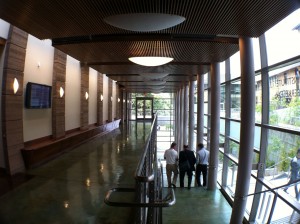
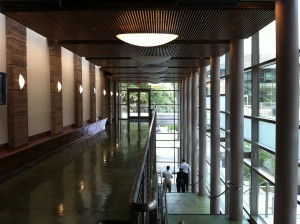
Fisheye -> Wide Angle -> Normal
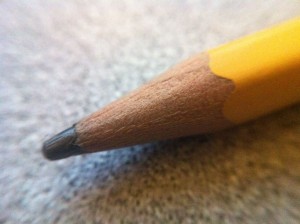
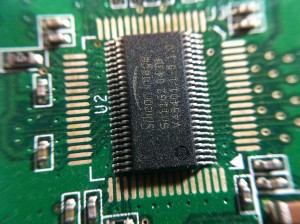
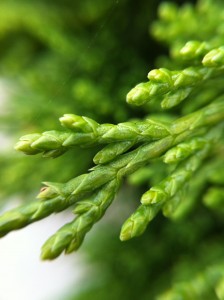
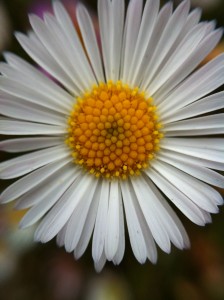
More macro samples
I would love to see your calibration photos with the normal iPhoto lens. Mine seems to distort near the edges even without an extra lens. Is there a way to take a calibration photo on my own to see if I am imagining things?
Pink Sun Drops – I’ll try to take some calibration photos with the normal iPhone lens and get back to you.